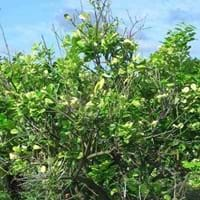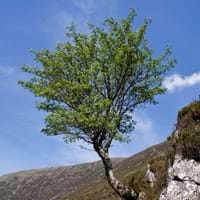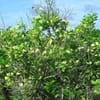Life Span
Perennial
Perennial
Origin
Southeastern Asia
Asia, Europe, Northern Africa
Types
Not Available
Sorbus aucuparia fenenkiana, Sorbus aucuparia glabrata, Sorbus aucuparia praemorsa
Number of Varieties
Not Available
Habitat
Deep, gardens, old gardens, Well Drained
Temperate Regions
USDA Hardiness Zone
9-11
3-7
Sunset Zone
H1, H2, 8, 9, 12, 13, 14, 15, 16, 17, 18, 19, 20, 21, 22, 23, 24
A1, A2, A3, 1a, 1b, 2a, 2b, 3a, 3b, 4, 5, 6, 7, 8, 9, 10, 14, 15, 16, 17
Habit
Oval or Rounded
Oval or Rounded
Flower Color Modifier
Bicolor
Bicolor
Fruit Color
Yellow, Green, Yellow green
Orange, Yellow
Leaf Color in Spring
Green
Green
Leaf Color in Summer
Green
Green
Leaf Color in Fall
Green
Dark Green
Leaf Color in Winter
Light Green
Dark Green
Plant Season
Spring, Summer, Fall
Spring, Fall
Sunlight
Full Sun, Partial Sun
Full Sun, Partial Sun
Type of Soil
Loam, Sand
Clay, Loam, Sand
The pH of Soil
Acidic, Neutral
Acidic, Neutral
Soil Drainage
Well drained
Average
Bloom Time
Spring, Late Spring, Early Summer, Summer, Late Summer, Early Fall
Late Spring
Tolerances
Drought
Not Available
Where to Plant?
Ground
Ground
How to Plant?
Seedlings
Budding, Grafting, Stem Cutting
Plant Maintenance
Medium
Medium
Watering Requirements
Average Water Needs, Water Deeply
Do Not over Water, Water in the early morning hours
In Summer
Lots of watering
Lots of watering
In Spring
Moderate
Moderate
In Winter
Average Water
Average Water
Soil pH
Acidic, Neutral
Acidic, Neutral
Soil Type
Loam, Sand
Clay, Loam, Sand
Soil Drainage Capacity
Well drained
Average
Sun Exposure
Full Sun, Partial Sun
Full Sun, Partial Sun
Pruning
Prune for shortening long shoots, Remove damaged leaves, Remove dead branches, Remove dead leaves, Thinning
Remove dead or diseased plant parts, Trim each shoot back to the first set of leaves
Fertilizers
Apply N-P-K, can go long without fertilizers
All-Purpose Liquid Fertilizer, Doesn't require fertilization when grown in rich soil
Pests and Diseases
Armored scales, Fomes root rot, Mites, Red blotch
Aphids, blister mites, Canker, fireblight, sawflies, Silver leaf
Plant Tolerance
Cold climate, Drought, Heat And Humidity
Not Available
Flowers
Insignificant
Yes
Flower Petal Number
Single
Single
Fragrant Bark/Stem
Yes
No
Foliage Texture
Medium
Fine
Foliage Sheen
Glossy
Matte
Attracts
Birds, Butterflies
Birds
Allergy
Not Available
Anxiety, Depression, High blood cholestrol, High blood pressure, Pain, Stress
Aesthetic Uses
Bonsai
along a porch, deck or patio, Showy Purposes
Beauty Benefits
Not Available
Not Available
Environmental Uses
Air purification
Air purification, Food for birds, Shadow Tree
Medicinal Uses
Blood purifier, Digestion problems, Digestive disorders
Diarrhea, Inflammation, Laxative, Urinary tract problems, Vitamin C
Part of Plant Used
Fruits, Leaves
Bark, Fruits, Wood
Other Uses
Making Shampoo, Used as insect repellent
Used for its medicinal properties, Used for woodware
Used As Indoor Plant
No
No
Used As Outdoor Plant
Yes
Yes
Garden Design
Container, Edible, Fruit / Fruit Tree, Hedges, Mixed Border
Feature Plant, Mixed Border, Topiary / Bonsai / Espalier
Botanical Name
CITRUS hystrix
Sorbus aucuparia
Common Name
Kaffir Lime, Makrut
Rowan, Mountain ash
In Hindi
काफ़िर लाइम
रोवाण पौधा
In German
Kaffernlimette
Rowan Tree
In French
combava
Rowan Tree
In Spanish
cafre
Rowan Tree
In Greek
Καφρός Lime
Rowan Tree
In Portuguese
Kaffir Lime
Árvore de Rowan
In Polish
kaffir wapno
Rowan Tree
In Latin
Cafres Lime
Rowan ligno
Phylum
Tracheophyta
Magnoliophyta
Class
Magnoliopsida
Magnoliopsida
Clade
Angiosperms, Eudicots, Rosids
Angiosperms, Eudicots, Rosids
Tribe
Not Available
Not Available
Subfamily
Not Available
Not Available
Number of Species
Not Available
Not Available
Season and Care of Kaffir Lime and Rowan Tree
Season and care of Kaffir Lime and Rowan Tree is important to know. While considering everything about Kaffir Lime and Rowan Tree Care, growing season is an essential factor. Kaffir Lime season is Spring, Summer and Fall and Rowan Tree season is Spring, Summer and Fall. The type of soil for Kaffir Lime is Loam, Sand and for Rowan Tree is Clay, Loam, Sand while the PH of soil for Kaffir Lime is Acidic, Neutral and for Rowan Tree is Acidic, Neutral.
Kaffir Lime and Rowan Tree Physical Information
Kaffir Lime and Rowan Tree physical information is very important for comparison. Kaffir Lime height is 180.00 cm and width 240.00 cm whereas Rowan Tree height is 1,000.00 cm and width 800.00 cm. The color specification of Kaffir Lime and Rowan Tree are as follows:
Kaffir Lime flower color: White
Kaffir Lime leaf color: Green
Rowan Tree flower color: White
- Rowan Tree leaf color: Green
Care of Kaffir Lime and Rowan Tree
Care of Kaffir Lime and Rowan Tree include pruning, fertilizers, watering etc. Kaffir Lime pruning is done Prune for shortening long shoots, Remove damaged leaves, Remove dead branches, Remove dead leaves and Thinning and Rowan Tree pruning is done Remove dead or diseased plant parts and Trim each shoot back to the first set of leaves. In summer Kaffir Lime needs Lots of watering and in winter, it needs Average Water. Whereas, in summer Rowan Tree needs Lots of watering and in winter, it needs Average Water.





